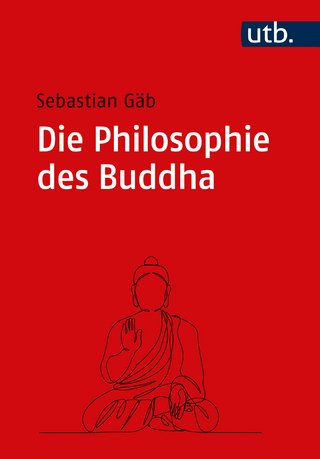
Krishnamacharya on Kundalini
The Origins and Coherence of His Position
Seiten
2022
Equinox Publishing Ltd (Verlag)
978-1-80050-152-2 (ISBN)
Equinox Publishing Ltd (Verlag)
978-1-80050-152-2 (ISBN)
Krishnamacharya on Kuonodalinai explores a distinctive teaching of 'the father of modern yoga', T. Krishnamacharya.
Krishnamacharya on Kundalini explores a distinctive teaching of 'the father of modern yoga', T. Krishnamacharya. Whereas most yoga traditions teach that kundalini is a serpentine energy that rises, Krishnamacharya defined it differently. To him, kundalini is a serpentine blockage which prevents prana (breath or life-force) from rising and which represents avidya (spiritual ignorance). Simon Atkinson draws from over 20 years of study and practice under teachers following Krishnamacharya. He combines analysis of quotations from yoga workshops with a detailed study of traditional Sanskrit texts. He traces the textual origins of Krishnamacharya's position to two sects of Visnu-worshiping temple priests, and shows how it is compatible with a stream of South Asian thought where snakes represent something to be overcome. Atkinson challenges claims that Krishnamacharya's position can be found in his religious tradition of Srivaisnavism. He questions the tradition's reliance on textual sources, showing how the coherence of Krishnamacharya's position can only be maintained by employing elaborate arguments and rejecting texts that teach otherwise. Atkinson also explores how Krishnamacharya's teaching on kundalini influences how yoga is practised. He argues that Krishnamacharya's position is best viewed as a model for experience that guides practice.
Krishnamacharya on Kundalini explores a distinctive teaching of 'the father of modern yoga', T. Krishnamacharya. Whereas most yoga traditions teach that kundalini is a serpentine energy that rises, Krishnamacharya defined it differently. To him, kundalini is a serpentine blockage which prevents prana (breath or life-force) from rising and which represents avidya (spiritual ignorance). Simon Atkinson draws from over 20 years of study and practice under teachers following Krishnamacharya. He combines analysis of quotations from yoga workshops with a detailed study of traditional Sanskrit texts. He traces the textual origins of Krishnamacharya's position to two sects of Visnu-worshiping temple priests, and shows how it is compatible with a stream of South Asian thought where snakes represent something to be overcome. Atkinson challenges claims that Krishnamacharya's position can be found in his religious tradition of Srivaisnavism. He questions the tradition's reliance on textual sources, showing how the coherence of Krishnamacharya's position can only be maintained by employing elaborate arguments and rejecting texts that teach otherwise. Atkinson also explores how Krishnamacharya's teaching on kundalini influences how yoga is practised. He argues that Krishnamacharya's position is best viewed as a model for experience that guides practice.
Simon Atkinson has been practising and studying yoga in the broad tradition following Krishnamacharya since the 1990s and has been learning Sanskrit since 2001. He teaches academic English and academic skills at the University of Cambridge.
Preface
1. Introduction
2. The Yogayajnavalkya - Krishnamacharya's Main Source on Kundalini
3. Kundalini in Other Vaisnava Texts
4. A Union of Yoga-s - Linking Hathayoga and Patanjali via Kundalini
5. The Symbolism of Serpents
6. Kundalini in Srivaisnavism
7. Discussion and Conclusion
Appendix - Dating the Yogayajnavalkya and Related Texts
Glossary
| Erscheinungsdatum | 19.04.2022 |
|---|---|
| Zusatzinfo | 11 photos and figures, colour and black and white |
| Verlagsort | London |
| Sprache | englisch |
| Maße | 156 x 234 mm |
| Gewicht | 4078 g |
| Einbandart | kartoniert |
| Themenwelt | Geisteswissenschaften ► Philosophie ► Östliche Philosophie |
| ISBN-10 | 1-80050-152-8 / 1800501528 |
| ISBN-13 | 978-1-80050-152-2 / 9781800501522 |
| Zustand | Neuware |
| Haben Sie eine Frage zum Produkt? |
Mehr entdecken
aus dem Bereich
aus dem Bereich


